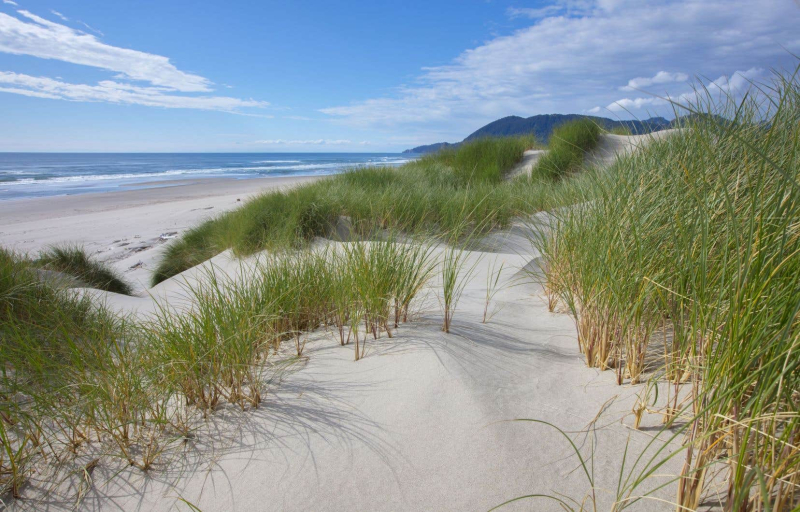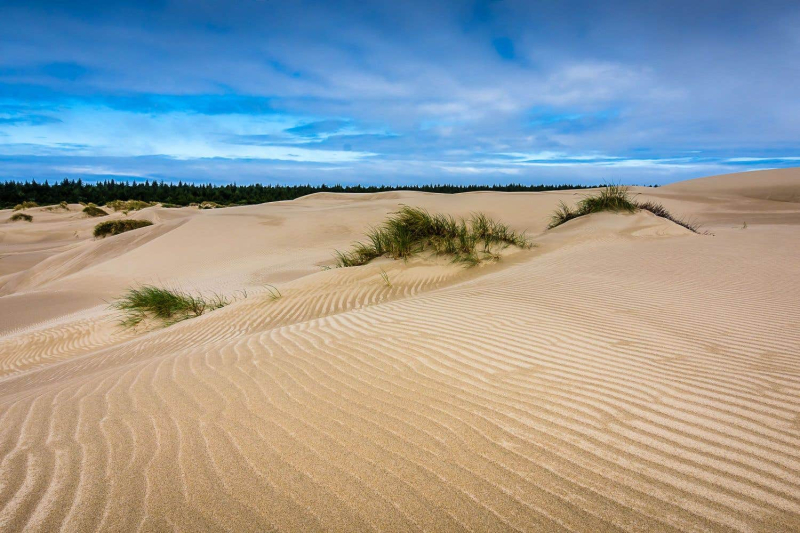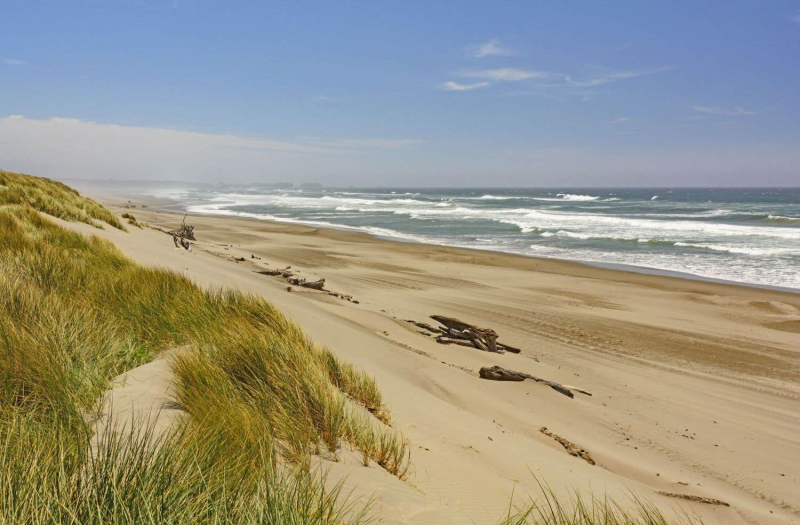
Photo: Getty Images iStockphoto A dune formation at Nehalem Bay State Park, Oregon, on the Pacific Ocean
Allyson Chiu – The Washington Post
March 25, 2024
- United States
The famous coastal dunes that inspired the sandscapes of the desert planet Arrakis in Frank Herbert's science fiction novel Dune are threatened by climate change and human activity.
Like many beaches around the world, the vast sandy ecosystem along Oregon's central coast is threatened by rising sea levels and increasingly stormy weather. powerful. “There are a lot of places where dunes are eroding where they weren't eroding in the past,” says Sally Hacker, a coastal ecologist and professor at Oregon State University who studies relief shapes.
When populations build to their limits, disrupting the complex sand system, these dunes can become even more vulnerable to coastal erosion.
The undulating mounds that line the beaches are much more than big piles of sand. In addition to providing critical habitat for wildlife and the potential to sequester carbon, these structures help protect coastal communities from devastating storms — one of the main reasons why some Cities are investing heavily in the restoration and construction of these dunes. In Salisbury, Massachusetts, for example, a local group spent more than $500,000 to build a protective dune that was washed away within days after a strong storm hit the seaside town. Wed
What is a dune ?
Dunes are raised sandy landforms in which plants generally grow. They are often found along low-lying coastlines where powerful waves and currents push sand toward the beach. The grains are carried up the beach and inland where they are trapped by plants, gradually accumulating sand and building dunes over time.
Without plants, the stable sand hills that people recognize as dunes would not form. “It would be similar to the very open, shifting sand environment we see on Arrakis,” says Ms. Hacker.
“The important thing is the underlying root system,” she adds. This network of roots stabilizes the dune and prevents it from eroding. »

Photo: Getty Images Dunes can prevent damaging winds and waves from reaching people or natural habitats behind them.
Historically, most dunes in Oregon and Washington were mounds of loose sand with sparse vegetation. To prevent the grains from blowing away and overwhelming nearby villages, efforts were made in the early 1900s to systematically plant certain European plants to stabilize the sand and create large dunes. In the late 1950s, Herbert, then a journalist, traveled to the dunes near Florence, Oregon, where he found inspiration for his future novel Dune.
When vegetated dunes form naturally, the sand grains pack into them compactly, making the mound more stable, says Alison Branco, director of climate adaptation at the Nature Conservancy, At New York. This slow process “partly explains why a natural dune that formed gradually is different from a large pile of sand formed by dumping it,” she adds.
Why do we need dunes ?
Besides the recognizable features of picturesque beachscapes, sand structures are often the first line of defense for seaside communities against storms and rising tides. During storms, for example, dunes can block damaging winds and waves from reaching people or natural habitats behind them.
If left undisturbed, the dunes would likely be able to withstand rising waters and extreme weather, Branco said. For example, they can be flattened by storms and rebuild.
“If they were not manipulated, they would be very resistant to the effects of climate change,” she says.
Dunes could also be a tool in the fight against climate change, says Hacker, who researches dune systems and carbon sequestration.

Photo: Getty Images/iStockphoto The Pacific Coast at Bullards Beach State Park in Oregon
Are there artificial dunes ?
Yes, but it is not easy to build one. Because dunes can effectively protect homes and natural habitats from storms and rising tides, residents of many coastal communities work to restore eroded dunes or erect new ones from scratch.< /p>
Creating a resilient dune takes time, says Hacker. If we start by planting vegetation and allowing the sand to accumulate naturally, depending on the supply of sand from the beach, it can take five to ten years before the dune is sufficiently high and stable to resist erosion.
Also read
- Towards a new national park in the dunes sector of Tadoussac
Building dunes where there were none before is unlikely to work, Branco says. But even if it's in the right place, experts say a human-made dune might not be as resilient as one that formed naturally, particularly if it doesn't have time to develop.
“It's basically bypassing the natural processes that normally form a robust dune built to withstand the conditions of our coastline,” explains Christine Angelini, director of the Center for Coastal Solutions at the University of Florida.< /p>
As Salisbury residents recently found out, a newly constructed dune may not last if put to the test too soon.
“We are faced with a very brutal set of conditions that make it very difficult to put these systems in place,” argues Ms. Angelini.
